This post may contain affiliate links. Please read our disclosure policy.
Transform ordinary heavy cream into a thick, rich spread with this simple small batch Clotted Cream recipe. Perfect for topping scones or enhancing pastries, it’s a delightful addition to any morning tea or brunch. This recipe relies on the simplicity of its single ingredient and the magic of time, turning heavy cream into something truly special. With minimal effort and a touch of patience, you’ll create an indulgent treat that surpasses store-bought varieties.
Enjoy the rich, creamy texture of homemade clotted cream paired with a variety of our small batch scone recipes. Whether you prefer the classic simplicity of Cream Scones, the fruity sweetness of Strawberry Scones or Peach Scones, the zesty tang of Lemon Poppy Seed Scones, the vibrant flavor of Cranberry Orange Scones, or the savory goodness of Ham and Cheese Scones, this clotted cream is the perfect accompaniment.
Table of Contents
- Why You’ll Love This Recipe
- What Is Clotted Cream?
- Ingredient Notes: Choosing The Right Cream For Clotted Cream
- Choose Your Baking Dish: Size Matters
- How To Make Clotted Cream
- Expert Tips
- What To Serve With Clotted Cream
- Frequently Asked Questions
- Ways To Use Leftover Ingredients
- Small Batch Clotted Cream Recipe Recipe
Why You’ll Love This Recipe
- Easy To Make: This recipe is incredibly simple, requiring minimal effort. Just pour the cream into a dish and let your oven do the rest.
- Small Batch Perfection: Designed for one or two people, it avoids waste.
- Save Money: Skip the expensive store-bought clotted cream and make your own for a fraction of the price.
- No Special Equipment Needed: All you need is an oven and a shallow baking dish.
- Versatility: Perfect with scones, pastries, or as a luxurious addition to desserts.
What Is Clotted Cream?
Clotted cream is a rich and incredibly delicious spreadable form of cream that is often served with scones and jam. It is made by putting high-fat cream into a shallow tray and heating and then cooling the cream. As the cream cools, the fats in the cream rise and form thick lumps, “clots” which are skimmed off and become the clotted cream.
This incredible cream spread originated in the counties of Devon and Cornwall, located in southwest England. Clotted cream is often referred to as Devonshire cream or Cornish cream.
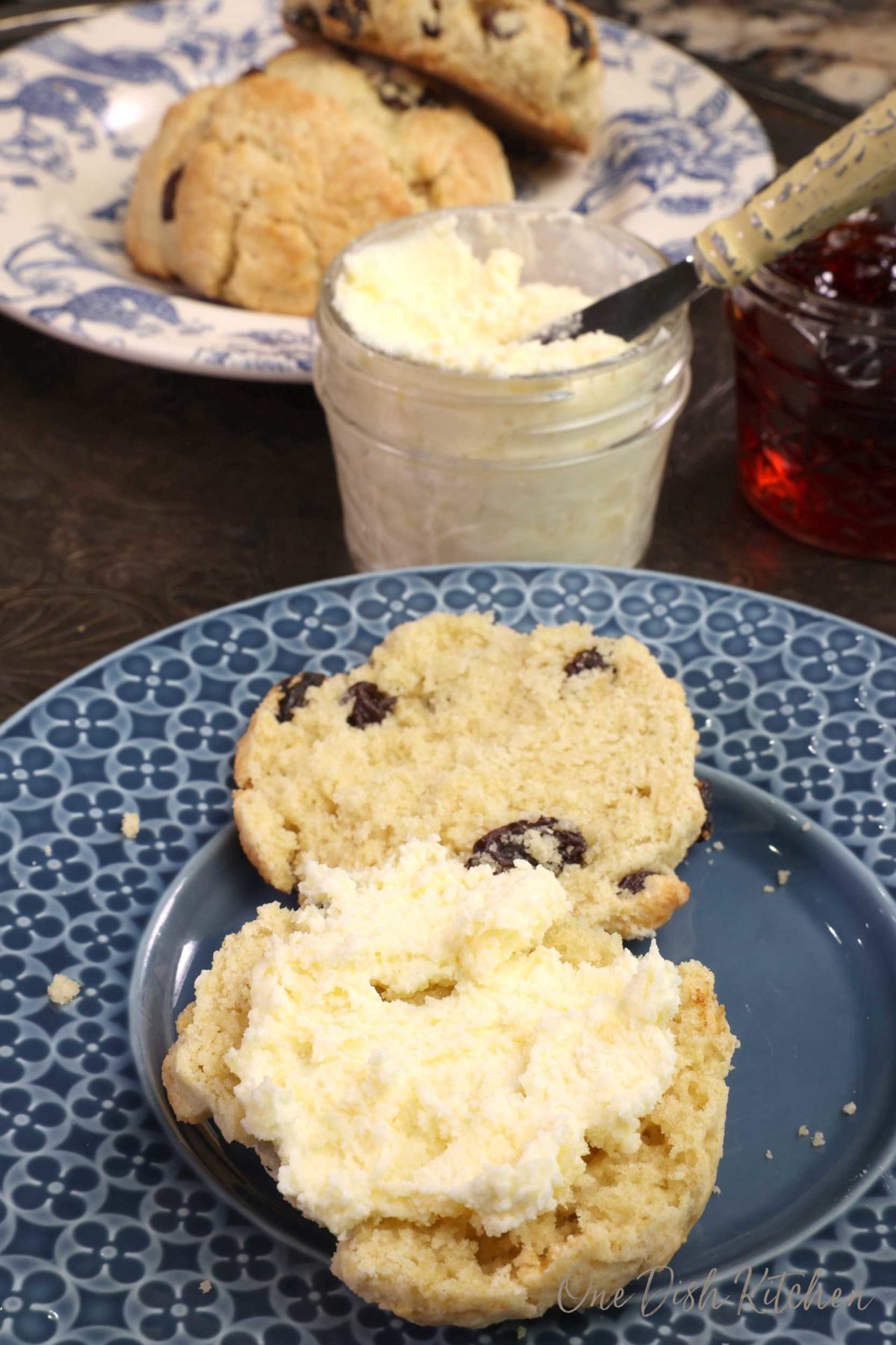
Ingredient Notes: Choosing The Right Cream For Clotted Cream
- Heavy Cream: This is the star of the show! Here’s a breakdown of pasteurization and how it affects clotted cream:
- Regular Pasteurized Cream (Preferred): This is your best bet. This type of cream undergoes a less intense heating process than ultra-pasteurized cream, leading to better curd formation.
- Ultra-Pasteurized Cream (Works in a Pinch): While this cream is heated to a higher temperature for a longer shelf life, it can still be used to make clotted cream. The curds may not separate as prominently, but you’ll achieve a satisfactory result.
Don’t worry if you can’t find regular pasteurized cream! Finding regular pasteurized cream can be challenging. I’ve tested both ultra-pasteurized and regular pasteurized creams, and both work effectively. You can see the results in our recipe photos (made with ultra-pasteurized cream).
Here’s a quick summary of the creams we tested:
- Ultra-pasteurized heavy cream (grocery store brand like Harris Teeter)
- Ultra-pasteurized heavy whipping cream (local co-op brand like Organic Valley)
- Pasteurized heavy whipping cream (local creamery brand)
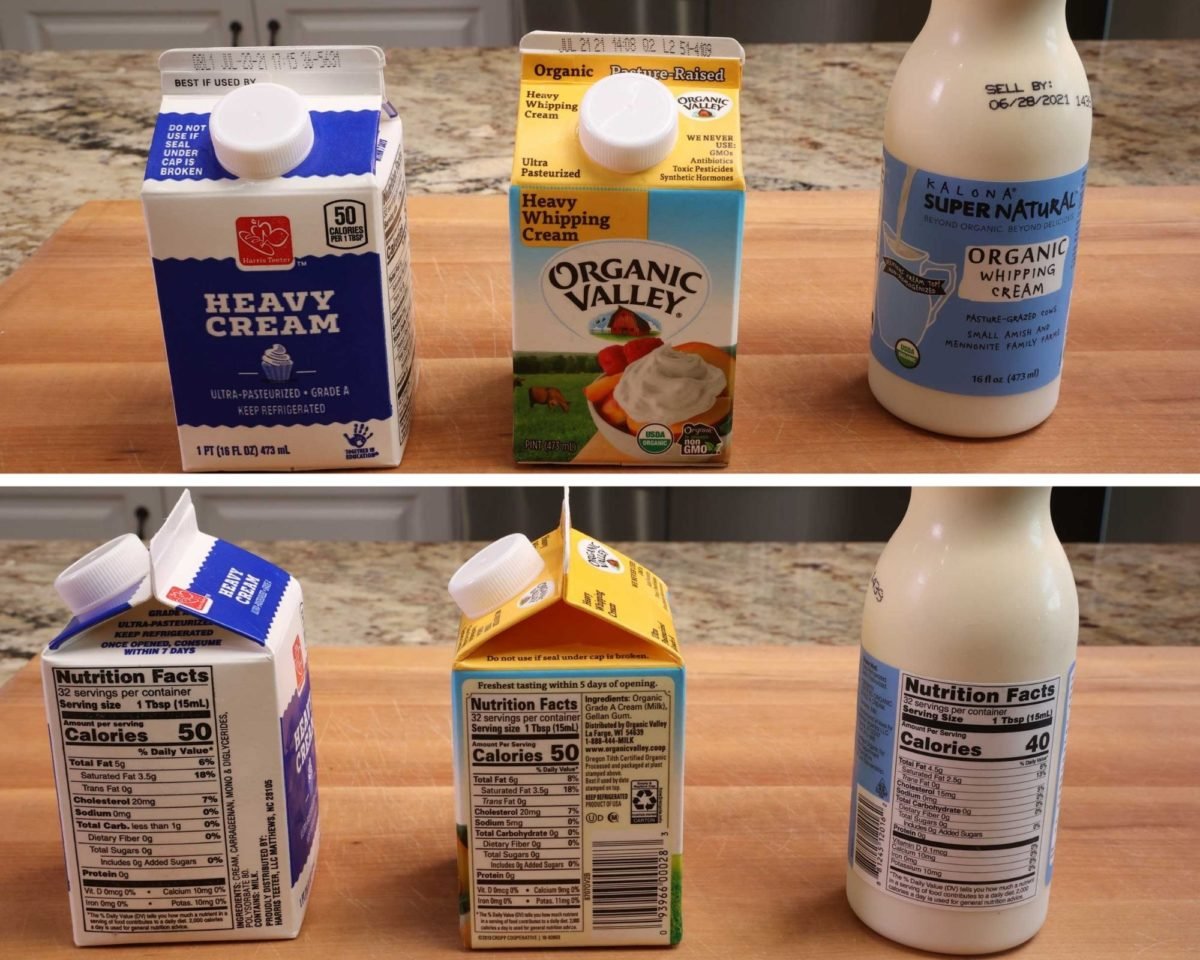
Choose Your Baking Dish: Size Matters
For this small batch recipe, you’ll need a shallow baking dish. Here are some options that work well:
- 8-inch x 6-inch Oval Baking Dish: This is my go-to size, offering a base area of around 38 square inches. It allows for even heating and perfect clotted cream results.
- 8-inch x 8-inch Square Baking Pan: Another good option! This pan provides a similar amount of surface area and will work just fine for making your clotted cream.
Remember: The key is to use a shallow dish. This ensures the cream heats evenly throughout, leading to a successful batch of clotted cream.
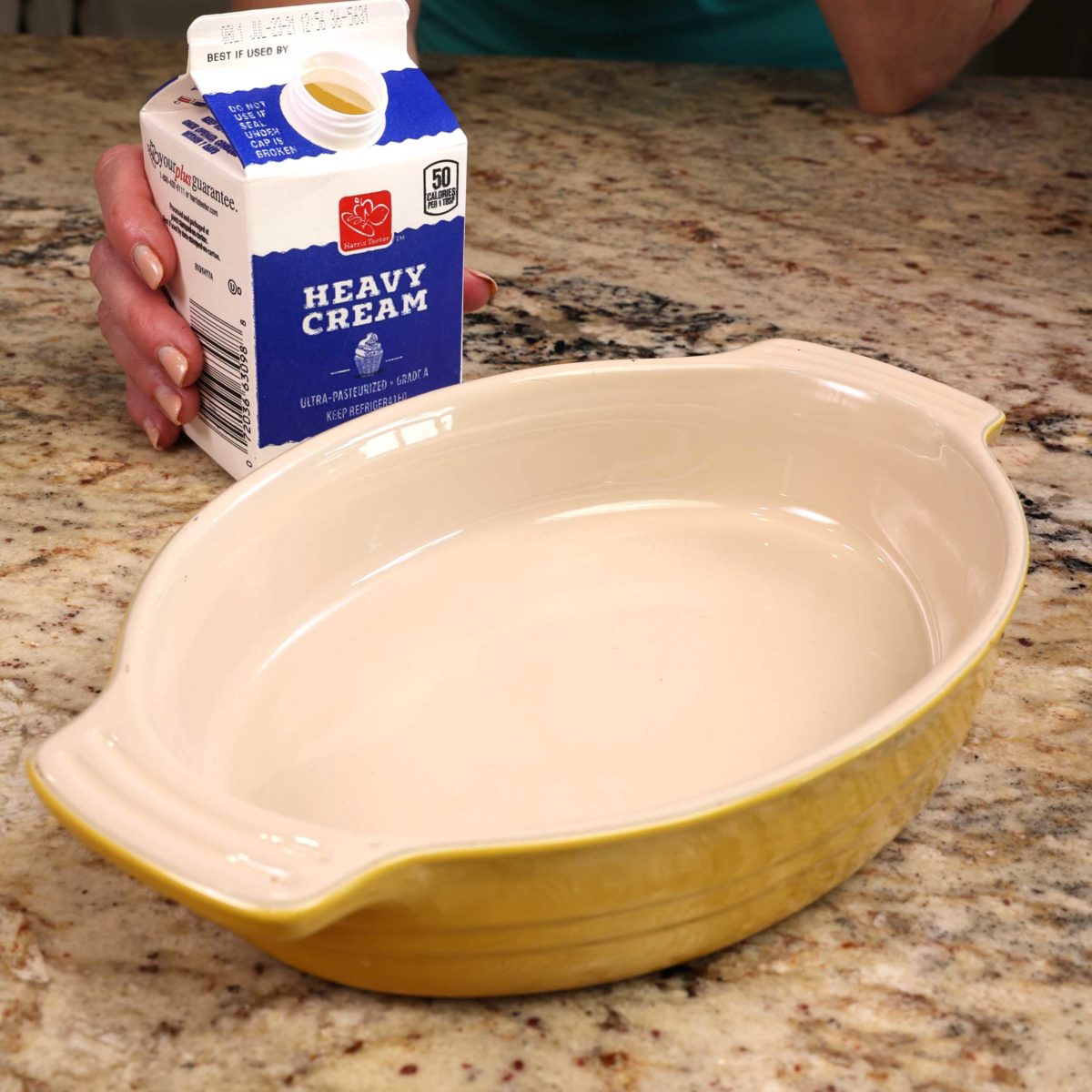
How To Make Clotted Cream
- Start by preheating your oven to 175°F (80°C). Pour the cream into an 8×6 inch oval oven-safe dish and place it in the oven. Let it bake for 12 hours, which works well overnight. Be aware that some ovens may turn off automatically after a certain period, so check your oven’s manual and set an alarm to restart it if needed.
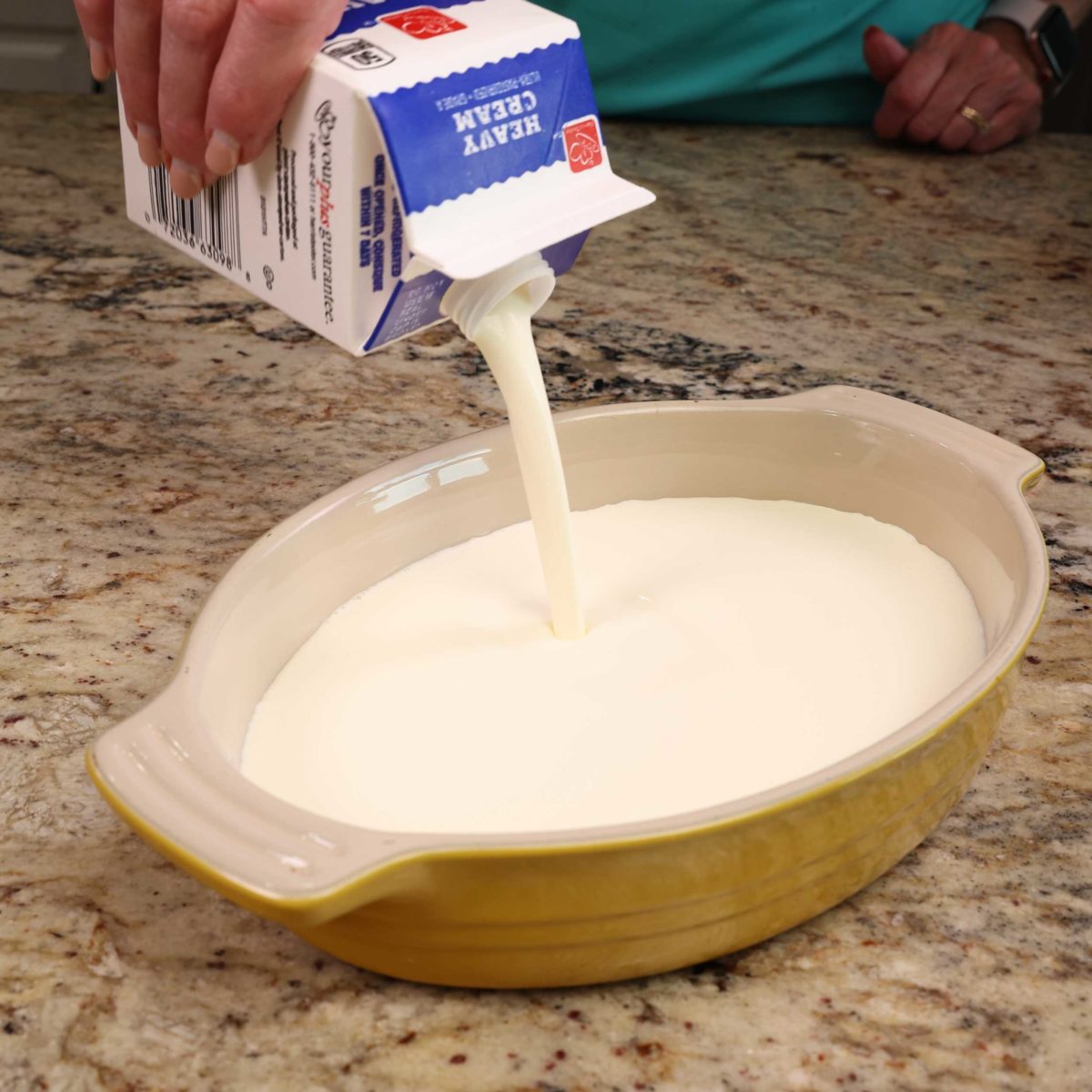
- After the 12-hour baking period, take the dish out of the oven. You’ll notice a yellowish layer on top – that’s your clotted cream.
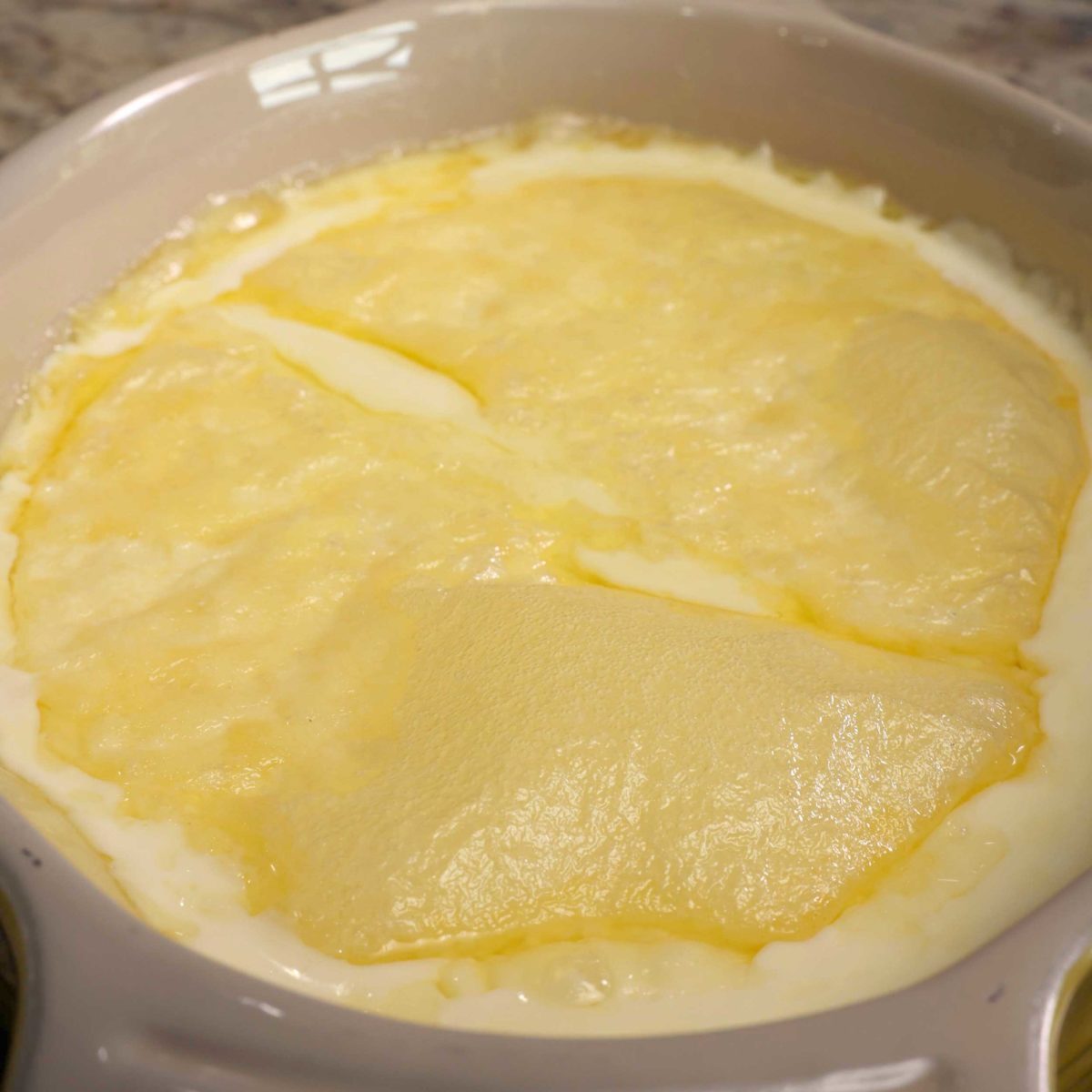
- Let the dish cool at room temperature, then cover it and place it in the refrigerator for another 12 hours to set.
- Following this refrigeration period, take the dish out and gently spoon the thick, buttery clotted cream into a jar, leaving the liquid (whey) behind. This leftover liquid is great for baking scones. The clotted cream you spoon out should have a rich, creamy texture, similar to crème fraîche but even creamier and slightly sweeter.
You can enjoy the clotted cream as it is, directly from the dish, or stir it for a lighter, smoother texture.
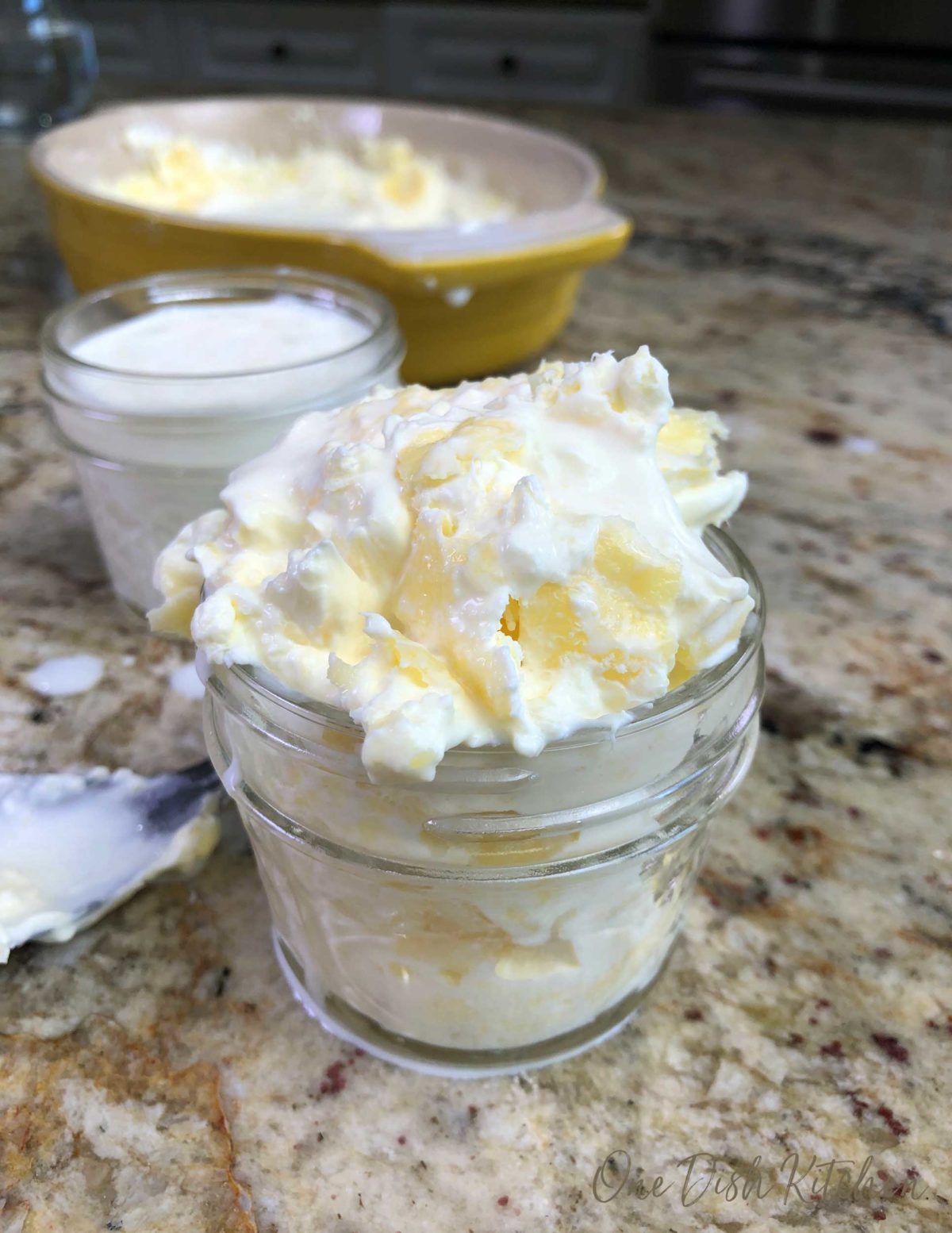
From the photos provided below, it’s evident that the clotted cream made from both ultra-pasteurized and pasteurized cream appears very similar in appearance.
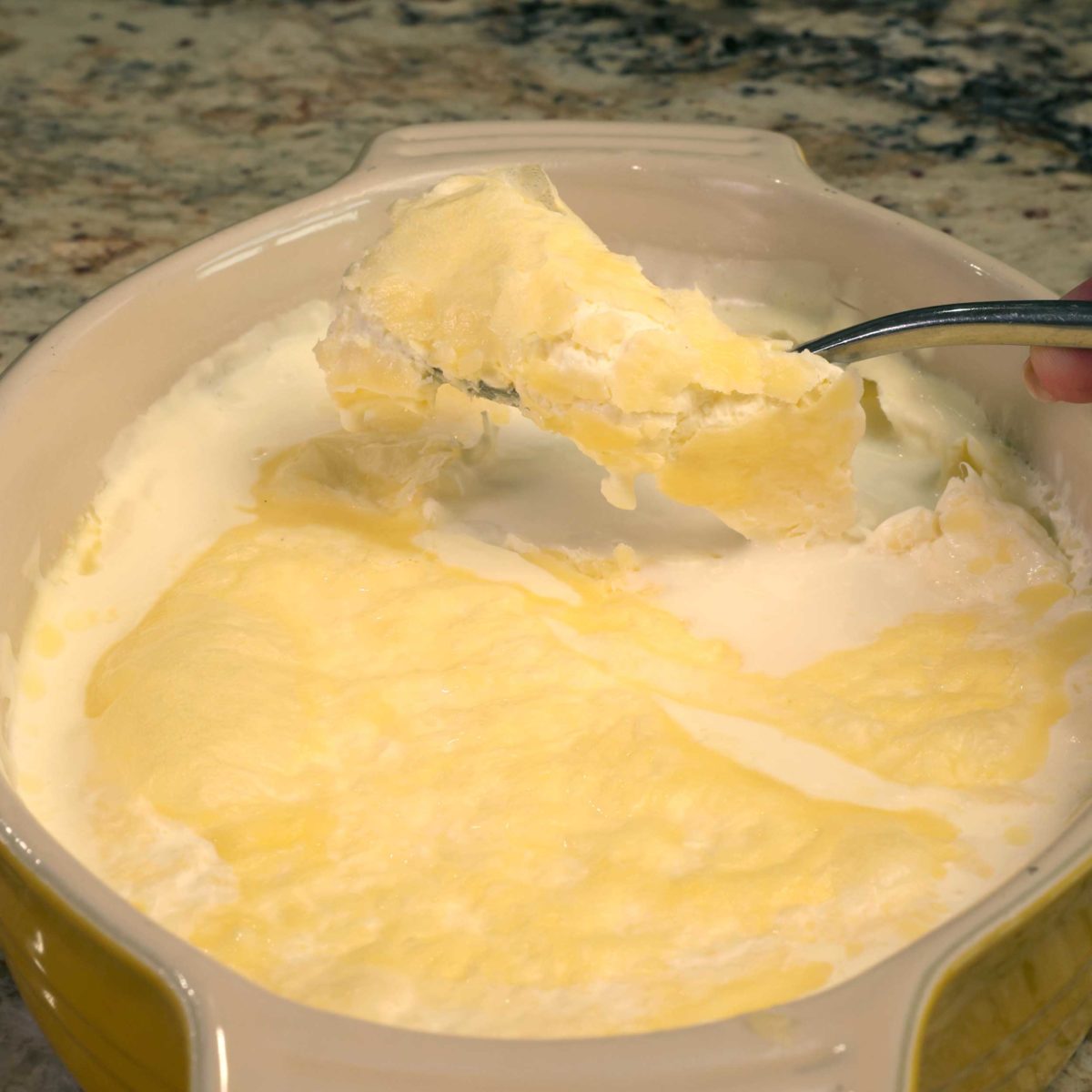
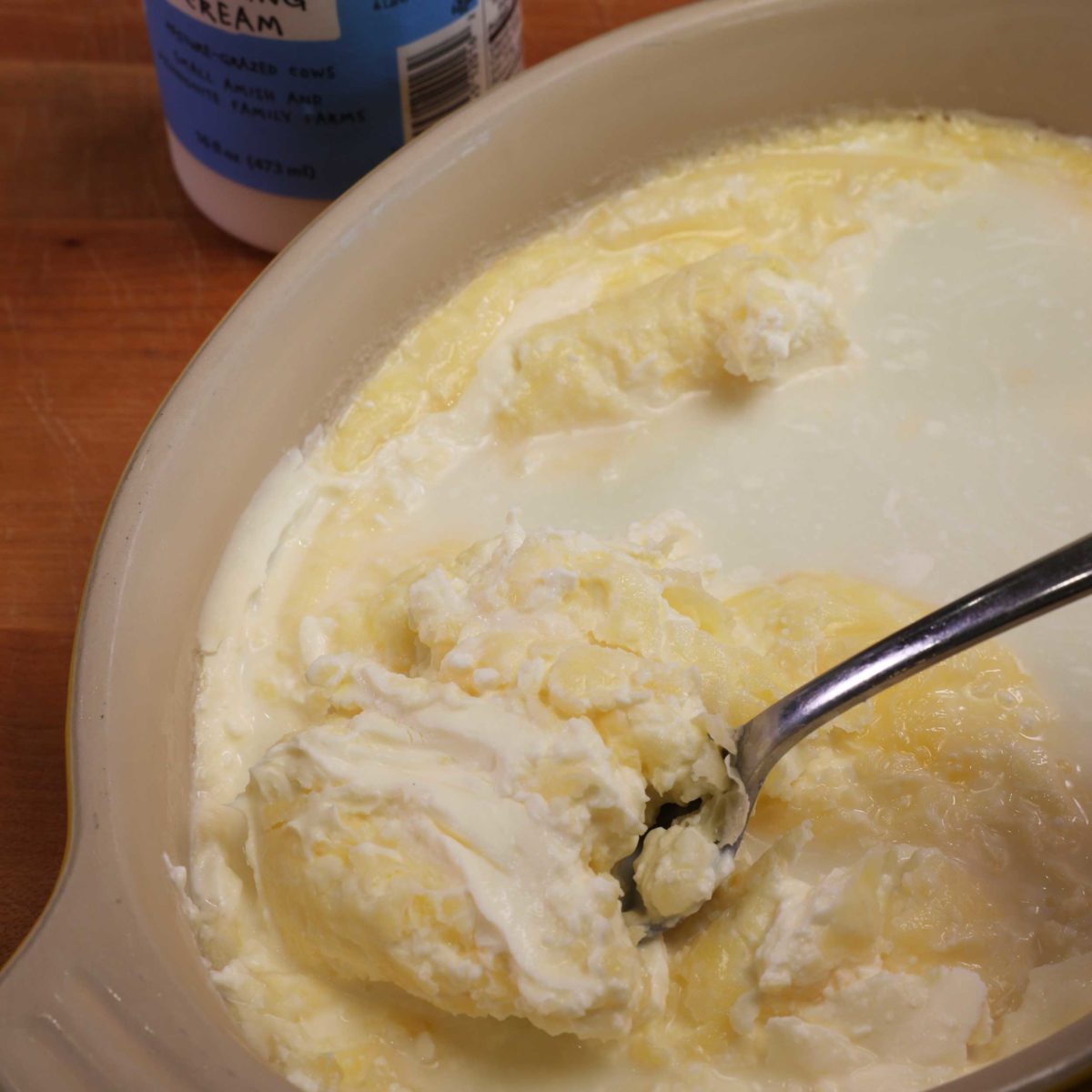
Expert Tips
- Ensure that your oven remains on for the entire cooking process. Some ovens automatically shut off after a set time, so it’s important to check your oven’s manual to see if this applies. If your oven does have an auto shut-off feature, set an alarm to turn it back on as needed.
- If you’re interested in a larger quantity of clotted cream, this recipe can easily be doubled. Just remember to switch to a bigger baking dish, such as a 9×13-inch, to accommodate the increased amount of cream.
- Don’t discard the liquid left at the bottom of the dish post-clotted cream preparation. It’s a great substitute for milk in recipes, particularly in making scones.
What To Serve With Clotted Cream
Enjoying homemade clotted cream is an experience in itself. Here are some delightful ways to enjoy it:
- Classic Cream Tea: Spread clotted cream on warm scones alongside jam for a traditional English afternoon tea experience.
- Top Your Pancakes or Waffles: Add a dollop of clotted cream to your favorite pancakes or waffles for a decadent breakfast or brunch treat.
- Fresh Fruit Delight: Drizzle some honey or maple syrup over fresh berries and top them off with a spoonful of clotted cream for a light and refreshing dessert.
- Coffee Break Companion: Add a touch of luxury to your coffee break by stirring a spoonful of clotted cream into your hot coffee.
- Baked Apple Perfection: Elevate your baked apples by adding a scoop of clotted cream before baking for a warm and comforting dessert.
Frequently Asked Questions
1 cup of clotted cream.
Homemade clotted cream will keep in the refrigerator for up to 5 days in an airtight container.
While this recipe is designed for enjoying fresh clotted cream, you can freeze leftovers for up to 3 months if needed. Be aware that freezing may cause a slight change in texture. If you do freeze your clotted cream, let it cool completely first. Transfer it to an airtight container suitable for freezing, label it with the date, and store it in the back of your freezer. When you’re ready to enjoy it again, thaw the clotted cream overnight in the refrigerator. Remember, it’s best not to refreeze thawed clotted cream. So, for the ultimate taste and texture, enjoy your clotted cream fresh whenever possible!
Unfortunately, no. The low and slow approach is key.
It could be due to the type of cream or variations in oven temperature.
Traditionally, people in Devon spread clotted cream on the scones first and follow up with jam while the Cornish tradition is to spread jam first followed by the cream.
Ways To Use Leftover Ingredients
If you have any ingredients leftover from this recipe, check out our Leftover Ingredients Recipe Finder or you might like to consider using them in any of these single serving and small batch recipes:
If you’ve tried this small batch clotted cream or any recipe on One Dish Kitchen please let me know how you liked it by rating the recipe and telling me about it in the comment section below.
Also, if you take a picture please tag us on Instagram (@onedishkitchen) we’d love to see!
Small Batch Clotted Cream Recipe
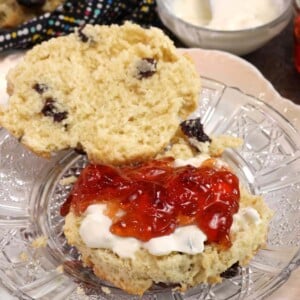
Equipment
- 8×6 inch oval baking dish or an 8×8 inch baking dish
Ingredients
- 1 pint heavy cream (2 cups) –See notes below
Instructions
- Start by preheating your oven to 175°F (80°C). Pour the cream into an 8×6 inch oval oven-safe dish and place it in the oven. Let it bake for 12 hours, which works well overnight. Be aware that some ovens may turn off automatically after a certain period, so check your oven's manual and set an alarm to restart it if needed.
- After the 12-hour baking period, take the dish out of the oven. You'll notice a yellowish layer on top – that's your clotted cream.
- Let the dish cool at room temperature, then cover it and place it in the refrigerator for another 12 hours to set.
- Following this refrigeration period, take the dish out and gently spoon the thick, buttery clotted cream into a jar, leaving the liquid (whey) behind. Pro Tip: This leftover liquid is a great substitute for milk in recipes, particularly in making scones.
- You can enjoy the clotted cream as it is, directly from the dish, or stir it for a lighter, smoother texture.
Notes
-
- Heavy Cream: This is the star of the show! Here’s a breakdown of pasteurization and how it affects clotted cream:
-
- Regular Pasteurized Cream (Preferred): This is your best bet. This type of cream undergoes a less intense heating process than ultra-pasteurized cream, leading to better curd formation.
-
- Ultra-Pasteurized Cream (Works in a Pinch): While this cream is heated to a higher temperature for a longer shelf life, it can still be used to make clotted cream. The curds may not separate as prominently, but you’ll achieve a satisfactory result.
-
- Heavy Cream: This is the star of the show! Here’s a breakdown of pasteurization and how it affects clotted cream:
- Ensure that your oven remains on for the entire cooking process. Some ovens automatically shut off after a set time, so it’s important to check your oven’s manual to see if this applies. If your oven does have an auto shut-off feature, set an alarm to turn it back on as needed.
- If you’re interested in a larger quantity of clotted cream, this recipe can easily be doubled. Just remember to switch to a bigger baking dish, such as a 9×13-inch, to accommodate the increased amount of cream.
- Don’t discard the liquid left at the bottom of the dish post-clotted cream preparation. It’s a great substitute for milk in recipes, particularly in making scones.
Nutrition
The information shown is an estimate provided by an online nutrition calculator. It should not be considered a substitute for a professional nutritionist’s advice.
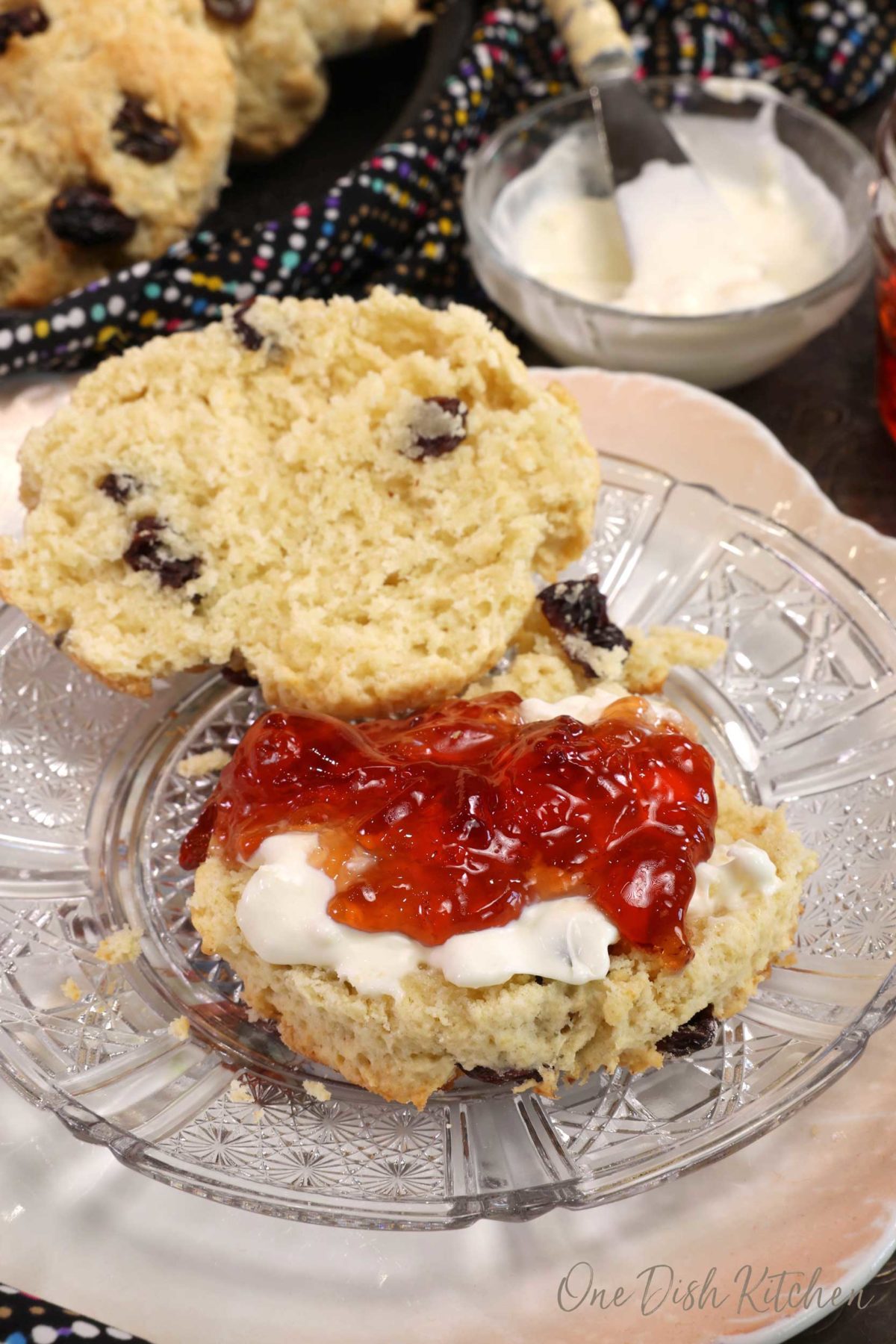
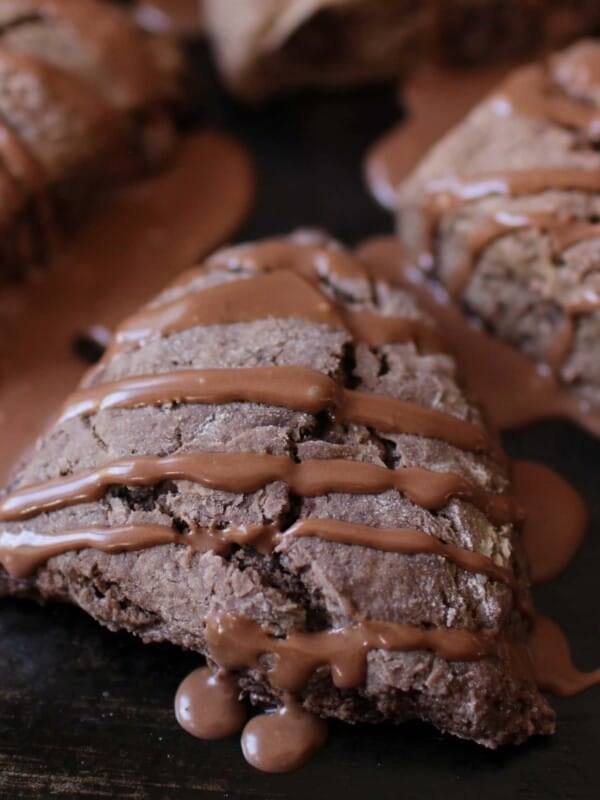
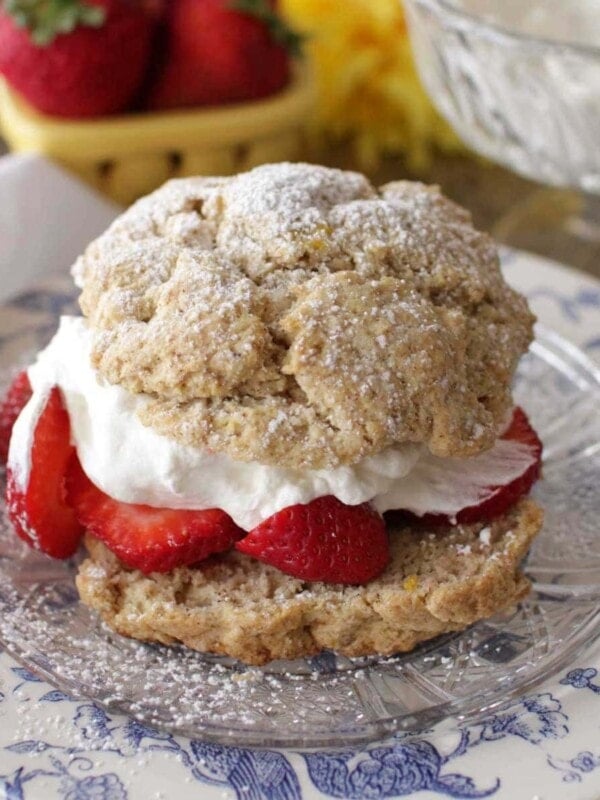
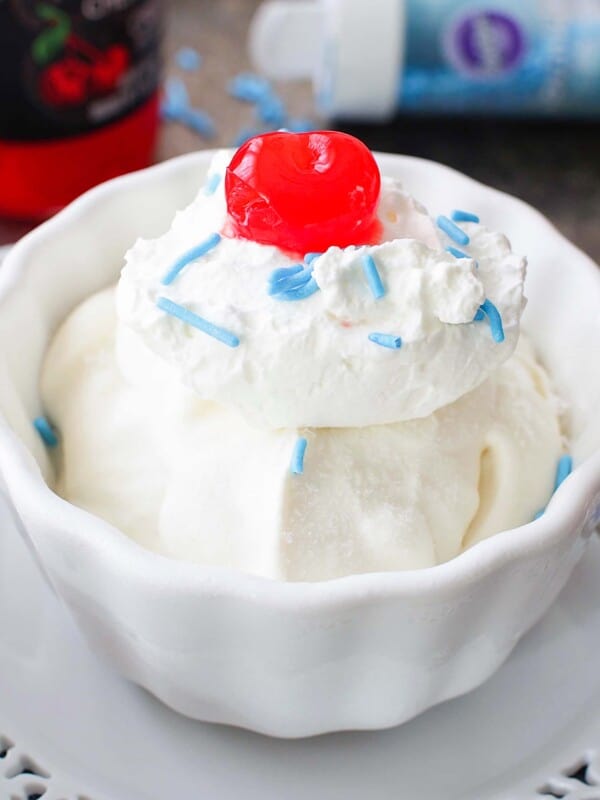
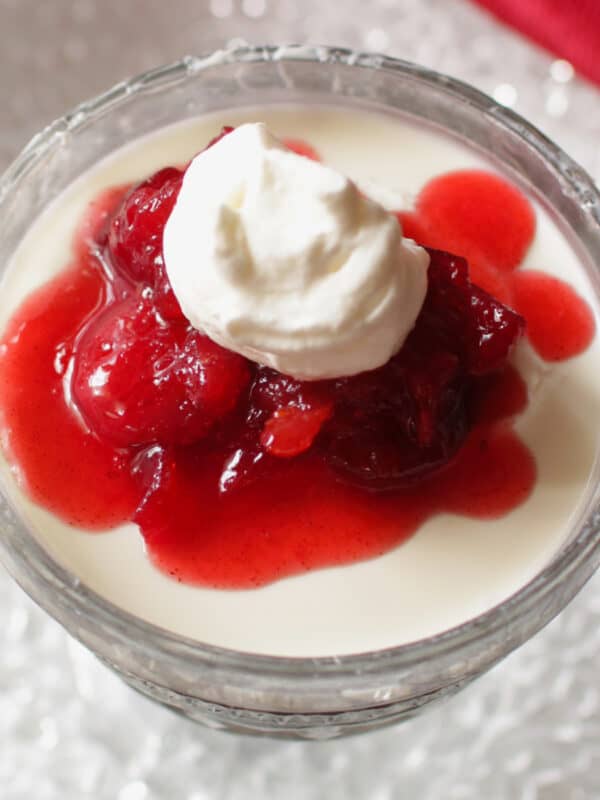
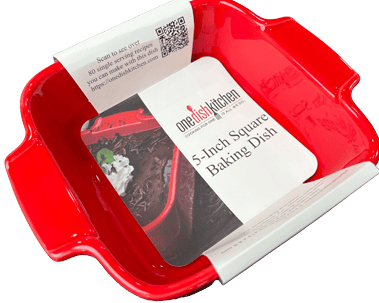










Can I use the leftover liquid to make a second batch of clotted cream?
No. I like to use the leftover liquid from the clotted cream to make scones or biscuits.
Used ultra-pasteurized cream and was delighted with the results. I will never buy an overpriced jar again! $7.99 for a small jar at World Market and online. I got 4x as much cream from the recipe, and it cost me about $1.50. Thank you very much!
Tried it for the Queen’s Platinum Jubilee with great success! Mine was a little thick so had to stir in some of the liquid but otherwise tastes great and can’t wait to try it on scones I’m baking this week.
I have made clotted cream using these exact same instructions from various sites. I also have found that you can use ultra pasteurized with virtually the same results. Most photos show the cream to be snowy white. You show yours to be more yellow. However I have made it covered and uncovered and it still comes out with a golden brown crust on top instead of yellow. I have actually checked it after only 4 hours and it is yellow but I left it in the oven for the full 12 hours. I have taken it out after 10 hours but it’s still more browned on top.My oven’s lowest setting is 180. It doesn’t make for a pretty cream like most recipe photos depict but it tastes good. Actually the crust is the tastiest part. Yesterday I made a stovetop version which took less than an hour. It is creamier and whiter and is pretty good but doesn’t have that slight caramelized flavor .
My ovens lowest temperature is 200. Does this effect and reduce the cooking time because it is hotter? or will it still work at 200 degrees?
Hi Bayley, my concern would be that the cream won’t clot properly. However, if you’d like to try it check your cream after 10 hours instead of 12 hours.
I would love to make this clotted cream, my oven only goes to 200 Fahrenheit I wouldn’t normally worry but it’s in the oven for 12 hours is this possible for me to make this recipe?
Yes, you can still make this recipe since the oven heats to 175 F.
Thank you for your lovely recipes, Joanie.
For this recipe, can I freeze the left over cream and re-use it?
I am from South Africa.
Minnie
I’m so glad you are enjoying our recipes, Minnie. Yes, clotted cream can be frozen in an airtight container for up to 3 months.
I’m a little confused. I live in Quebec, Canada. We generally have 3 kinds of cream here. 10% milk fat is used as coffee cream, 15% milk fat is usually used for cooking, and 35% is called whipping cream. Which of these should I use for this recipe?
Use the one with the highest fat which would be whipping cream.
Omg! It worked with ultrapasturized cream. Delish, now onto making some cream scones to go with it! Thanks!
I have found clotted cream in the refrigerated section at Whole Foods but as you said — it’s rather pricey. I have had tea at Fortnum & Masons and a pre-theater tea at The Savoy. My favorite tea room in London is Maids of Honor, near Kew Gardens. They have the best meat pies!